Business

From Kitchen Counter to Global Phenomenon: The Rise of Ben & Jerry's Ice Cream
Have you ever wondered how Ben & Jerry's, the iconic ice cream brand known for its wacky flavors and social activism, began churning out happiness? It all started not in a sprawling factory, but in a much more down-to-earth location – a humble kitchen counter.
The Spark of Innovation:
In 1978, childhood friends Ben Cohen and Jerry Greenfield, both with a passion for good food and a slightly offbeat sense of humor, decided to take a leap of faith. In a Vermont kitchen, they experimented with flavors beyond the usual vanilla and chocolate, churning out their first batches in an old ice cream maker.
The First Steps:
The initial offerings were far from the extensive menu Ben & Jerry's boasts today. They started by selling their unconventional flavors like Cherry Garcia and Chocolate Chip Cookie Dough at local farmers markets. However, their focus on using high-quality ingredients and creating unique flavor combinations resonated with customers who craved something different.
A Turning Point:
A defining moment for Ben & Jerry's arrived in the early 1980s when they secured funding to expand their production. This allowed them to enter grocery stores and reach a wider audience. Beyond the delicious ice cream, their quirky naming conventions and playful packaging resonated with consumers, creating a strong brand identity.
More Than Just Ice Cream, a Social Mission:
Today, Ben & Jerry's is a global phenomenon, scooping smiles in over 35 countries. However, their commitment extends beyond just churning out delicious ice cream. They are a vocal advocate for social justice and environmental responsibility, using their platform to support important causes. Their "Cherry Garcia Our Democracy" campaign and commitment to fair trade ingredients exemplify their social conscience.
A Legacy of Flavor and Activism:
From a kitchen counter experiment to a globally recognized brand, Ben & Jerry's story is a testament to the power of combining passion with a unique approach. Their journey highlights the importance of creating a product that not only delights taste buds but also resonates with consumers' values.

From Classroom Experiment to Coding Powerhouse: The Rise of GitHub
Have you ever wondered how GitHub, the world's largest online code repository, transformed the way software is built and shared? It all began not in a high-tech Silicon Valley office, but in a much more unexpected place - a university classroom.
The Spark of Innovation:
In 2004, Chris Wanstrath, a computer science student at UC Santa Barbara, was frustrated with the limitations of traditional version control systems used for managing software code. These systems were often complex and cumbersome, hindering collaboration among developers. Wanstrath envisioned a simpler, more user-friendly solution to streamline code sharing and collaboration.
The First Steps:
Wanstrath, along with his co-founders Tom Preston-Werner and PJ Hyett, initially developed GitHub as a side project to manage their own coding endeavors. Inspired by Git, a powerful version control system, they built a web-based platform that emphasized ease of use and collaborative features.
A Turning Point:
A defining moment for GitHub arrived in 2008 when they launched public repositories. This feature allowed developers to publicly share their code, fostering collaboration on a global scale. GitHub's open-source philosophy resonated with programmers worldwide, creating a vibrant community where developers could learn, share ideas, and contribute to existing projects.
A Global Collaboration Hub:
Today, GitHub boasts millions of repositories and an immense community of developers. It has become the go-to platform for open-source software development, fostering innovation across countless projects. Companies of all sizes utilize GitHub to manage their codebases, streamline internal workflows, and tap into the vast talent pool within the platform's community.
A Legacy of Open Source:
From a classroom experiment to a coding powerhouse, GitHub's story showcases the power of collaborative innovation. Their journey highlights the importance of building a platform that fosters open exchange and collaboration, ultimately accelerating the pace of software development worldwide.

The Relentless Risk-Taker: Ingvar Kamprad's IKEA Revolution
Ingvar Kamprad, the founder of IKEA, wasn't your typical businessman. He wasn't born with a silver spoon, and his path to becoming one of the world's most successful entrepreneurs was paved with calculated risks, relentless innovation, and a touch of eccentricity.
From Match Seller to Furniture Mogul:
Born in 1926 in southern Sweden, Ingvar Kamprad's entrepreneurial spirit emerged early. At just five years old, he started selling matches to neighbors, a small venture that ignited a lifelong passion for business. By his teens, he had expanded his offerings to include fish, Christmas decorations, and other household items.
IKEA: Humble Beginnings and Bold Ideas:
In 1947, at the age of 21, Ingvar founded IKEA (an acronym formed from his initials, IK, Elmtaryd, his family farm, and Agunnaryd, his hometown). Initially, IKEA focused on selling furniture at low prices, targeting students and young families. One of Ingvar's early innovations was the now-iconic flat-pack furniture design, which reduced costs and made furniture more accessible.
A Culture of Cost-Consciousness and Innovation:
Ingvar Kamprad was a master of cost-cutting. He championed efficient production processes, self-service warehouses, and a minimalist design aesthetic – all factors that contributed to IKEA's affordability. He also fostered a culture of innovation, encouraging employees to find creative solutions to keep prices low and functionality high.
Global Expansion and Enduring Legacy:
From its humble beginnings in Sweden, IKEA has grown into a global furniture giant. Ingvar's relentless pursuit of affordability and his focus on democratic design – making good design accessible to everyone – revolutionized the furniture industry. He stepped down from his executive role at IKEA in 2014, but his legacy of innovation and cost-consciousness continues to shape the company's culture.
Beyond Business: A Complicated Figure:
Ingvar Kamprad's life wasn't without controversy. His frugal lifestyle and some of his business practices have been criticized. However, his dedication to making good design affordable and his unwavering focus on customer value remain undeniable contributions to the world of business.
Ingvar Kamprad's story is an inspiration for aspiring entrepreneurs. It demonstrates the power of innovation, calculated risk-taking, and a relentless focus on value creation.
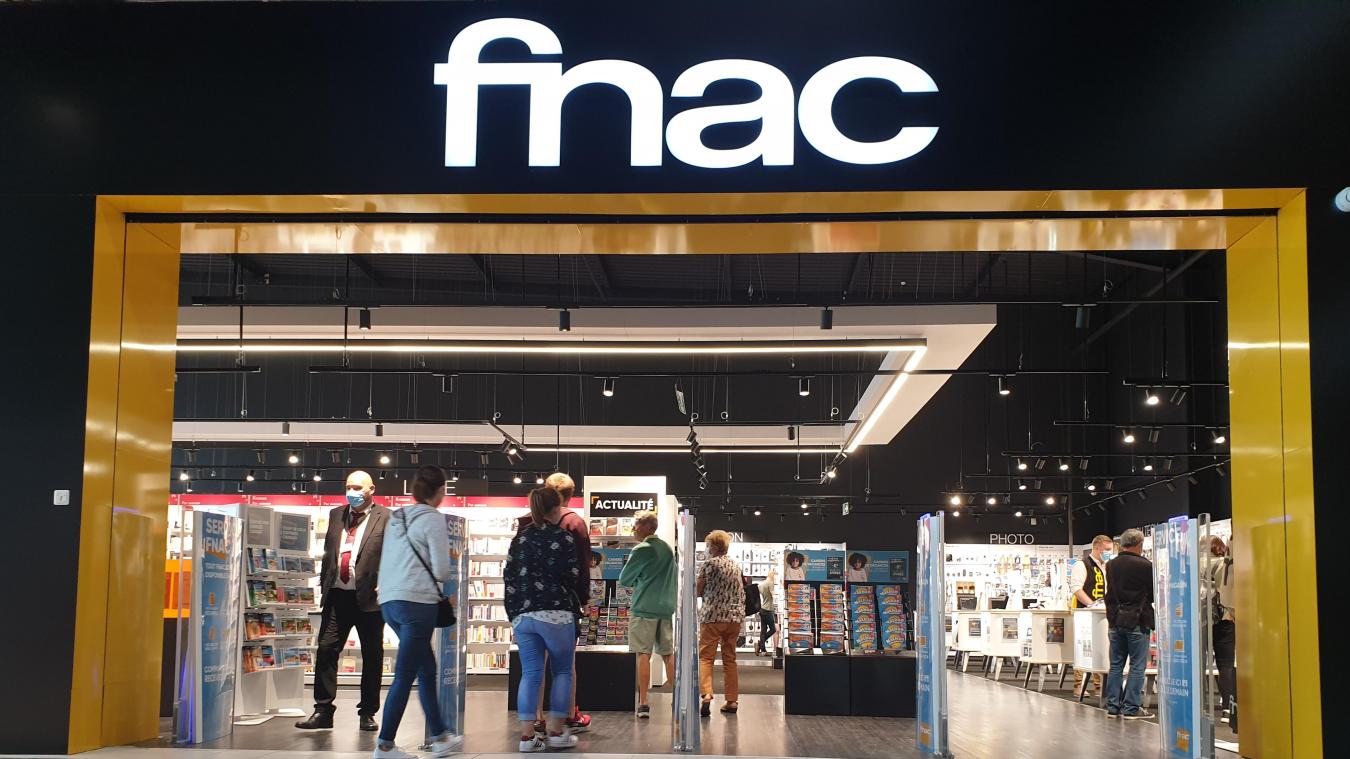
From Discounted Magazines to Tech Titan: The Fnac Journey
Fnac (originally Fédération Nationale d'Achats des Cadres, translating to National Purchasing Federation for Cadres) boasts a unique history, evolving from a member-based discount club to a leading electronics and cultural retailer in France and beyond.
Humble Beginnings with Socialist Roots (1950s):
1952: André Essel and Max Théret, driven by socialist ideals, conceived a new concept: a magazine-based buyers club offering discounted commercial and consumer products to its members.
1954: Fnac officially opens its doors, catering to a specific clientele – cadres, or French white-collar professionals.
Shifting Gears: Going Public and Expanding Horizons (1960s-1980s)
1960s and 1970s: Fnac experiences steady growth, expanding its product range to include cultural items like books, records, and later, hi-fi equipment.
1980: A significant turning point arrives as Fnac goes public on the Paris stock exchange, marking a shift from a members-only model to a broader consumer base.
The Rise of a Retail Powerhouse (1980s-2000s):
Focus on Technology and Culture: Fnac embraces the growing demand for electronics and positions itself as a leader in the French market. Cultural products like music and movies remain a core strength.
International Expansion: Recognizing the potential of new markets, Fnac begins its international expansion journey, opening stores in neighboring European countries.
A New Era: Fnac Darty and the Digital Age (2010s-Present)
2016: A merger with French appliance retailer Darty creates a formidable retail force – Fnac Darty Group. This combined entity offers a wider product range and strengthens its omnichannel presence.
Adapting to the Digital Age: Fnac Darty acknowledges the rise of e-commerce and invests heavily in its online platforms to complement its physical stores.
Fnac Today: A Retail Leader with a Global Vision
Fnac Darty Group: Today, Fnac operates as part of the Fnac Darty Group, a leading retailer in consumer electronics, cultural products, household appliances, and leisure goods.
Looking Ahead: Fnac Darty continues to adapt to the evolving retail landscape, focusing on innovation, omnichannel strategies, and providing a unique customer experience that blends physical and digital elements.
Fnac's story showcases a remarkable transformation, from a members-only club to a global leader in electronics and cultural retail. Their ability to adapt, embrace new technologies, and cater to a changing consumer base has been instrumental in their enduring success.
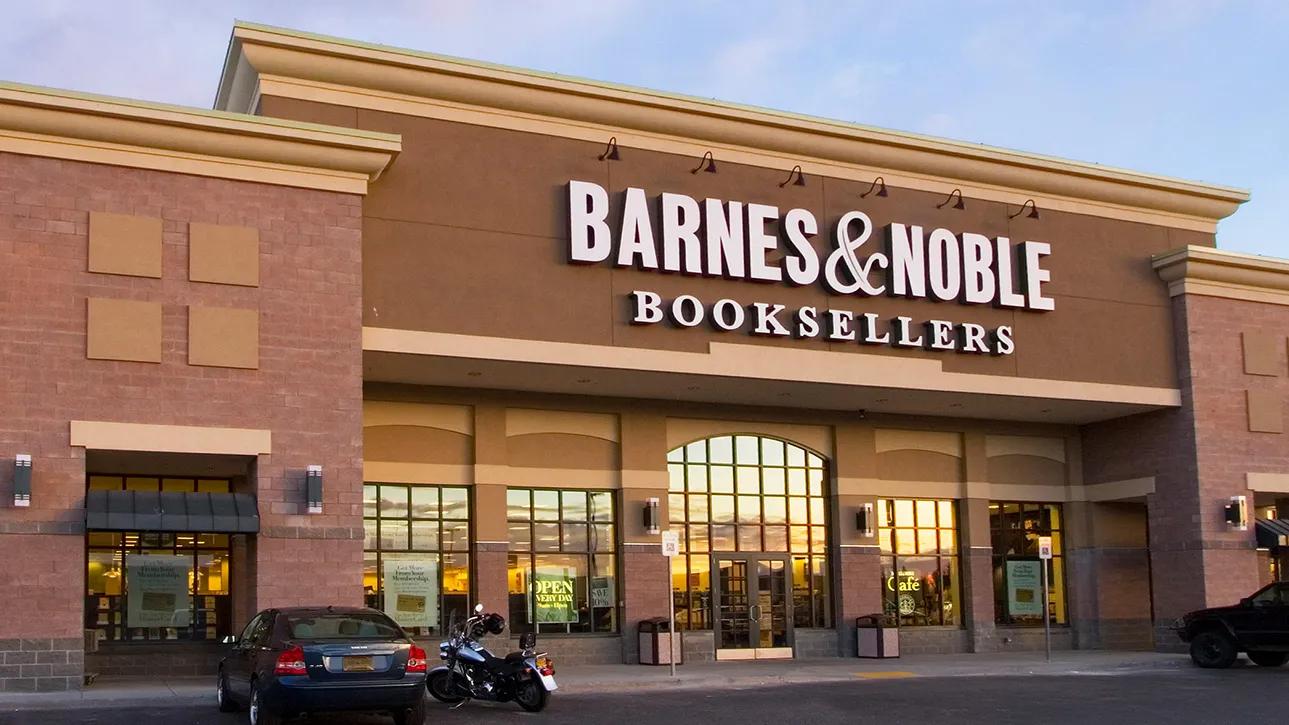
From Humble Bookstore to Retail Giant: The Barnes & Noble Story
Barnes & Noble, a name synonymous with books and cozy reading nooks, boasts a rich history that stretches back over a century. Let's explore the journey of Barnes & Noble, from its beginnings as a small bookstore to its enduring legacy as a pillar of the bookselling industry.
A New York Legacy: Birth of a Bookstore
1876: Charles M. Barnes Opens His Doors: Charles M. Barnes, a young college graduate with a passion for literature, opened a small bookstore in lower Manhattan, New York City. This modest shop, catering to students and scholars, laid the foundation for the Barnes & Noble we know today.
Expansion and Acquisitions: Over the next few decades, Barnes & Noble grew steadily, acquiring other bookstores and expanding its reach within New York City. The company established itself as a trusted source for books and a haven for book lovers.
The Rise of the Book Superstore: A Retail Revolution
1960s and 70s: The Rise of Barnes & Noble Bookstores: Recognizing changing consumer habits and a growing demand for a wider selection of books, Barnes & Noble pioneered the concept of the book superstore. These large stores offered a vast selection of titles, comfortable reading areas, and knowledgeable staff, creating a more immersive book browsing experience.
Dominating the Market: The book superstore model proved highly successful. Barnes & Noble expanded rapidly across the United States, acquiring competitors and establishing itself as a dominant force in the retail book market.
Adapting to the Digital Age: Challenges and Innovation
The Rise of E-readers and Online Retailers: The late 20th and early 21st centuries saw the rise of e-readers and online retailers like Amazon, posing a significant challenge to traditional bookstores. Barnes & Noble faced declining sales and needed to adapt to survive.
Embracing Change: Omnichannel Strategy and Community Focus: Barnes & Noble responded by developing an omnichannel strategy, offering online book sales alongside their physical stores. They also focused on creating a sense of community within their stores, hosting author events, book clubs, and educational programs.
Barnes & Noble Today: A Bookstore for the Digital Age
A Place for Discovery and Connection: While the retail landscape has changed, Barnes & Noble remains a vital part of the bookselling industry. They offer a curated selection of books, a welcoming atmosphere, and knowledgeable staff, catering to both casual readers and bibliophiles.
The Future of Bookselling: Barnes & Noble continues to adapt to the digital age. They are exploring new technologies like audiobooks and ebooks while maintaining the charm and value proposition of the physical bookstore experience.
The story of Barnes & Noble is a testament to the enduring power of books and the importance of physical bookstores. From a small shop in New York City to a nationwide chain, Barnes & Noble's legacy is one of innovation, community, and a love for the written word.

From Handmade Soaps to Sustainable Beauty Giant: The Lush Story
Lush, known for its vibrant bath bombs, handmade soaps, and fresh ingredients, has revolutionized the way we think about beauty products. But the story behind Lush is more than just colorful bath fizzers; it's a tale of ethical sourcing, environmental consciousness, and a commitment to creating a more sustainable beauty experience.
Humble Beginnings in a Dorset Kitchen
1988: From Vegetarian Restaurant to Cosmetic Collective: In a small town in Dorset, England, a group of friends passionate about vegetarianism and natural ingredients started a small company. Initially, they created cosmetics to sell alongside their vegetarian meals. This foray into cosmetics marked the birth of Lush.
Fresh, Handmade Products with a Cause: Lush differentiated itself from established brands by offering fresh, handmade products made with natural ingredients. They focused on ethical sourcing and sustainability, values that resonated with a growing environmentally conscious consumer base.
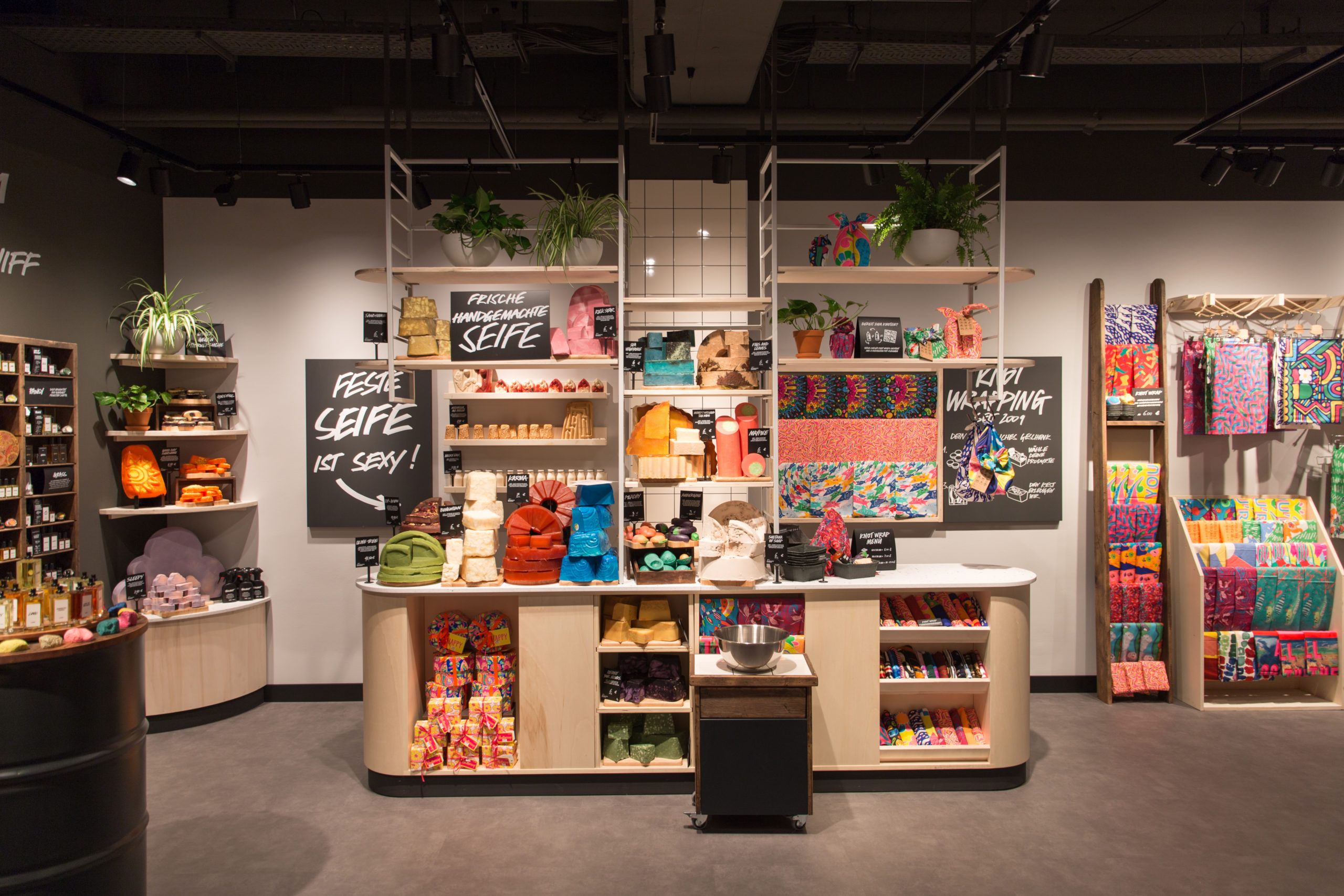
A Commitment to Ethics and Transparency
Fighting for Animal Rights: Lush has been a vocal advocate for animal welfare since its inception. The company is staunchly against animal testing and uses only cruelty-free ingredients. Their campaigning efforts have raised awareness about animal rights in the beauty industry.
Naked Packaging and Environmental Responsibility: Lush actively promotes sustainability by minimizing packaging and encouraging consumers to choose "naked" products that are package-free. They also source their ingredients ethically and strive to reduce their environmental footprint.
A Global Phenomenon with a Local Focus
Retail Expansion and Brand Recognition: Lush's commitment to fresh ingredients, ethical sourcing, and vibrant aesthetics has propelled them to global recognition. Their stores, with their distinctive aromas and interactive product displays, have become a unique retail experience.
Community Focus and Activism: Lush is more than just a beauty brand; it's a community. The company actively supports local businesses, grassroots activism, and environmental causes. Their stores often host workshops and events that promote sustainability and social responsibility.
Lush Today: A Leader in Sustainable Beauty
Continuous Innovation and Experimentation: Lush doesn't shy away from experimentation. They constantly develop new products using innovative ingredients and sustainable practices. Their commitment to fresh, handmade products ensures a unique and exciting experience for their customers.
The Future of Beauty: As the beauty industry undergoes change, Lush remains at the forefront. They are exploring new ways to reduce waste, source ingredients responsibly, and create products that are both effective and kind to the environment.
The story of Lush is an inspiration for businesses to embrace ethical practices and sustainability. From a small kitchen operation to a global leader in sustainable beauty, Lush continues to redefine what it means to create effective and delightful beauty products.
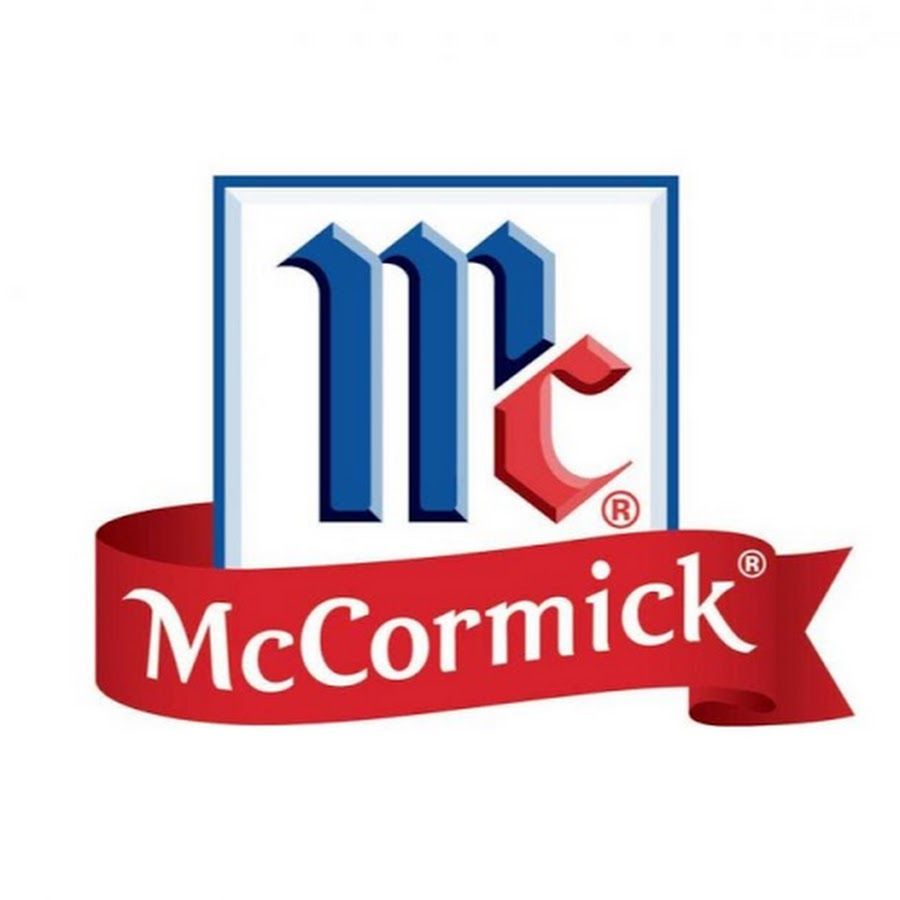
From Humble Spices to Global Giant: The McCormick Story
The name McCormick is synonymous with flavor, gracing spice racks and kitchens around the world. But the story of McCormick is more than just delicious herbs and spices. It's a tale of family, perseverance, and a keen understanding of consumer needs that transformed a small grocery store operation into a global flavor empire.
Seeds of Success: A Baltimore Grocery Store
1899: Willoughby McCormick Takes the Plunge: Willoughby McCormick, a young man with a passion for spices, founded a wholesale grocery business in Baltimore, Maryland. He quickly recognized the growing demand for high-quality, convenient spices for home cooks.
Building a Brand on Quality and Innovation: Unlike his competitors who sold spices by weight from bulk bins, McCormick offered pre-packaged spices with consistent quality and standardized labeling. This innovative approach resonated with consumers and helped establish the McCormick brand.
Spicing Up America's Kitchens
Early 20th Century: McCormick Becomes a Household Name: The 20th century saw McCormick's rise to national prominence. The company capitalized on new advertising techniques and popular food trends to position its spices as essential ingredients in American kitchens. McCormick's iconic red can with the windmill logo became instantly recognizable.
Beyond Spices: Embracing New Flavors: McCormick understood that consumer tastes evolve. The company diversified its product offerings beyond traditional spices, introducing extracts, food coloring, and recipe mixes. This commitment to variety ensured McCormick remained at the forefront of American cuisine.
A Global Reach: McCormick Spreads its Flavor
Mid-20th Century and Beyond: Expansion Abroad: As international trade flourished, McCormick recognized the potential of global markets. The company began exporting its products and establishing operations around the world. Today, McCormick operates in over 140 countries, catering to diverse palates and culinary traditions.
Acquisitions and Innovation Fuel Growth: Through strategic acquisitions and continuous investment in research and development, McCormick has expanded its product portfolio to encompass ethnic spices, gourmet food products, and convenient meal solutions.
A Legacy of Flavor: McCormick Today
A Family Business with a Global Vision: McCormick remains a family-controlled company, with the sixth generation of the McCormick family at the helm. Despite its global reach, the company maintains its commitment to quality, innovation, and customer satisfaction.
The Future of Flavor: In today's dynamic food scene, McCormick continues to adapt and innovate. The company is exploring new flavor trends, sustainable sourcing practices, and convenient packaging options to cater to the evolving needs of home cooks around the world.
The story of McCormick is a delicious reminder that even the simplest ingredients can spark a global phenomenon. From a Baltimore grocery store to a flavor powerhouse, McCormick's legacy continues to add zest to kitchens everywhere.

Duolingo: From Free Language Lessons to a Gamified Learning Empire
Duolingo, the name synonymous with the adorable green owl duo, has revolutionized how people approach language learning. But how did a free app manage to capture the hearts (and minds) of millions, becoming a gamified learning empire? Let's dive in!
A Bite-Sized Approach to Languages:
Duolingo launched in 2012 with a simple yet powerful concept: bite-sized, gamified language lessons accessible on your phone. Gone were the days of dry textbooks and expensive courses. Duolingo offered short, engaging activities that felt more like playing a game than studying.
The Power of Gamification:
The key to Duolingo's success lies in its gamification elements. Users earn points, unlock levels, and compete with friends, keeping them motivated and engaged. The app's streak system adds another layer of fun, encouraging users to practice daily and avoid losing their hard-earned progress.
A Freemium Model with Benefits:
Duolingo's core lessons are entirely free, making it accessible to a global audience. However, a premium subscription offers additional features like ad-free learning and offline access, further enhancing the user experience.
Beyond the Basics:
While Duolingo may not replace traditional language courses completely, it excels at laying a strong foundation. The app focuses on building vocabulary and conversational skills, making it a valuable tool for beginners or those looking to refresh their language knowledge.
The Future of Language Learning:
Duolingo continues to innovate, introducing new features like personalized learning paths and conversation practice with bots. As technology advances, we can expect even more immersive and interactive learning experiences from Duolingo.
Is Duolingo the Perfect Language Learning Solution?
Not necessarily. For true fluency, supplementing Duolingo with other resources like conversation practice or cultural immersion is recommended. However, Duolingo offers a fun and accessible way to kickstart your language learning journey, making it a valuable tool for anyone looking to expand their horizons.
So, the next time you see that green owl mascot, remember – Duolingo is more than just a cute app. It's a testament to the power of gamification and innovative technologies in making education engaging and accessible to a global audience.

The Rise of Discord: From Gamers' Playground to a Digital Town Square
Discord, the chat platform initially designed for gamers, has undergone a remarkable transformation. Today, it boasts millions of users across various communities, blurring the lines between a chat app and a vibrant online town square. Here's how Discord rose to prominence:
A Haven for Gamers:
Discord launched in 2015, offering a feature-rich platform specifically tailored to gamers. Features like low-latency voice chat, server organization tools, and screen sharing functions made it a game-changer for online gaming communication.
Beyond the Games:
Discord's appeal wasn't limited to just the gaming world. The platform's flexibility and customization options opened doors to a wider audience. Communities of all kinds, from artists and music enthusiasts to book clubs and cryptocurrency enthusiasts, began flocking to Discord.
The Power of Community:
Discord excels at fostering community spirit. Servers can be tailored to specific interests, with channels dedicated to discussions, file sharing, and even live events. This allows for in-depth conversations, knowledge sharing, and a strong sense of belonging for members with shared passions.
Challenges and Concerns:
Despite its success, Discord faces some challenges. The platform's open nature can lead to the formation of echo chambers and the spread of misinformation. Additionally, concerns about user moderation and potential for harassment within communities require ongoing vigilance.
The Future of Discord:
Discord's ability to evolve is key to its continued success. With the ongoing growth of online communities, Discord is well-positioned to play a central role in fostering online connections and shared interests. Whether it's facilitating remote collaboration or simply fostering a space for like-minded individuals to connect, Discord's future looks bright.
So, is Discord just for gamers anymore? Absolutely not. It's become a dynamic platform where diverse communities gather, discuss, and connect. As online interaction continues to evolve, Discord has established itself as a powerful tool for building and engaging with online communities.

Unveiling the Secrets of AliExpress: From Humble Beginnings to Global E-commerce Giant
AliExpress, a name synonymous with budget-friendly online shopping, boasts a massive global presence. But how did this platform achieve such fame, and is it truly reliable? Let's delve into the fascinating journey of AliExpress:
From B2B to Global Marketplace:
Born in 2010 as part of the Alibaba Group, AliExpress initially focused on facilitating business-to-business (B2B) transactions within China. However, its potential for connecting international buyers with Chinese sellers was quickly recognized. This shift to a business-to-consumer (B2C) model fueled its rapid growth.
Competitive Prices and Vast Selection:
One of AliExpress's biggest strengths lies in its affordability. Sellers on the platform are often small businesses or individual entrepreneurs, leading to competitive pricing. Additionally, AliExpress offers a staggering variety of products, making it a one-stop shop for almost anything imaginable, from electronics and clothing to homeware and even party supplies.
Buyer Protection and Reviews:
While concerns about product quality and reliability were initial hurdles, AliExpress has implemented measures to boost trust. Buyer protection programs offer some security in case of disputes or undelivered items. The platform also heavily relies on customer reviews, allowing buyers to make informed decisions.
Finding the Perfect Seller:
However, navigating a platform with millions of sellers requires some caution. Here are some tips for a smooth AliExpress experience:
Read Reviews: Pay close attention to user reviews for specific sellers and products. Look for consistent positive feedback for quality and customer service.
Compare Prices and Descriptions: Don't jump at the first offer. Compare prices and product descriptions from different sellers to find the best deals.
Beware of "Too Good to Be True" Prices: If a price seems suspiciously low, it probably is. Do your research and be wary of unrealistic deals.
Choose Reliable Shipping: Opt for tracked shipping options for added peace of mind regarding delivery time and location.
Is AliExpress for You?
AliExpress can be a fantastic option for budget-conscious shoppers looking for a vast selection of products. However, keep in mind that shipping times can be longer compared to other retailers, and product quality can vary.
In Conclusion:
AliExpress has carved its niche in the e-commerce world by offering a treasure trove of products at competitive prices. With some savvy shopping strategies, you can leverage this platform to find great deals. Remember, do your research and choose reputable sellers for a smooth and successful shopping experience.

Can't Ignore It Anymore: Why Social Media is Your Business's Best Friend in 2024
Remember the days when a website and a catchy jingle were enough to build a brand? Yeah, those days are long gone. In today's digital age, social media reigns supreme. But why exactly is it such a necessary tool for any business in 2024? Let's break it down:
1. It's Where Your Audience Lives: Social media platforms like Facebook, Instagram, and TikTok boast billions of users – that's a massive pool of potential customers! By being present on these platforms, you're putting your business right in front of their eyes.
2. It's a Conversation Starter, Not a Billboard: Social media isn't a one-way street. It fosters real-time interactions with your audience. Respond to comments, host Q&As, and run polls – these interactions build trust and loyalty.
3. Targeted Advertising Gets Results: Gone are the days of spraying and praying with your marketing budget. Social media advertising allows you to target your ideal customer based on demographics, interests, and even online behavior.
4. Showcase Your Brand Personality: Social media is the perfect platform to show the human side of your business. Share behind-the-scenes glimpses, employee spotlights, and even a touch of humor! People connect with brands that feel authentic.
5. Build Brand Awareness (For Free!): Organic reach on social media might be a bit of a dance these days, but it's still possible to gain traction without spending a dime. Create engaging content, hop on trends, and use relevant hashtags – all great ways to get noticed for free.
6. Customer Service Champion: Social media is a fantastic tool for customer service. Respond to inquiries quickly and publicly to show your commitment to customer satisfaction. It also helps build trust with potential customers who see how you handle interactions.
7. Stay Ahead of the Curve: Social media is a hotbed for trends and industry news. By staying active, you'll have your finger on the pulse of what's happening, allowing you to adapt and innovate to stay competitive.
The Bottom Line: Social media isn't just a fad; it's a fundamental part of any successful business strategy in 2024. So, if you haven't already, it's time to jump on board!
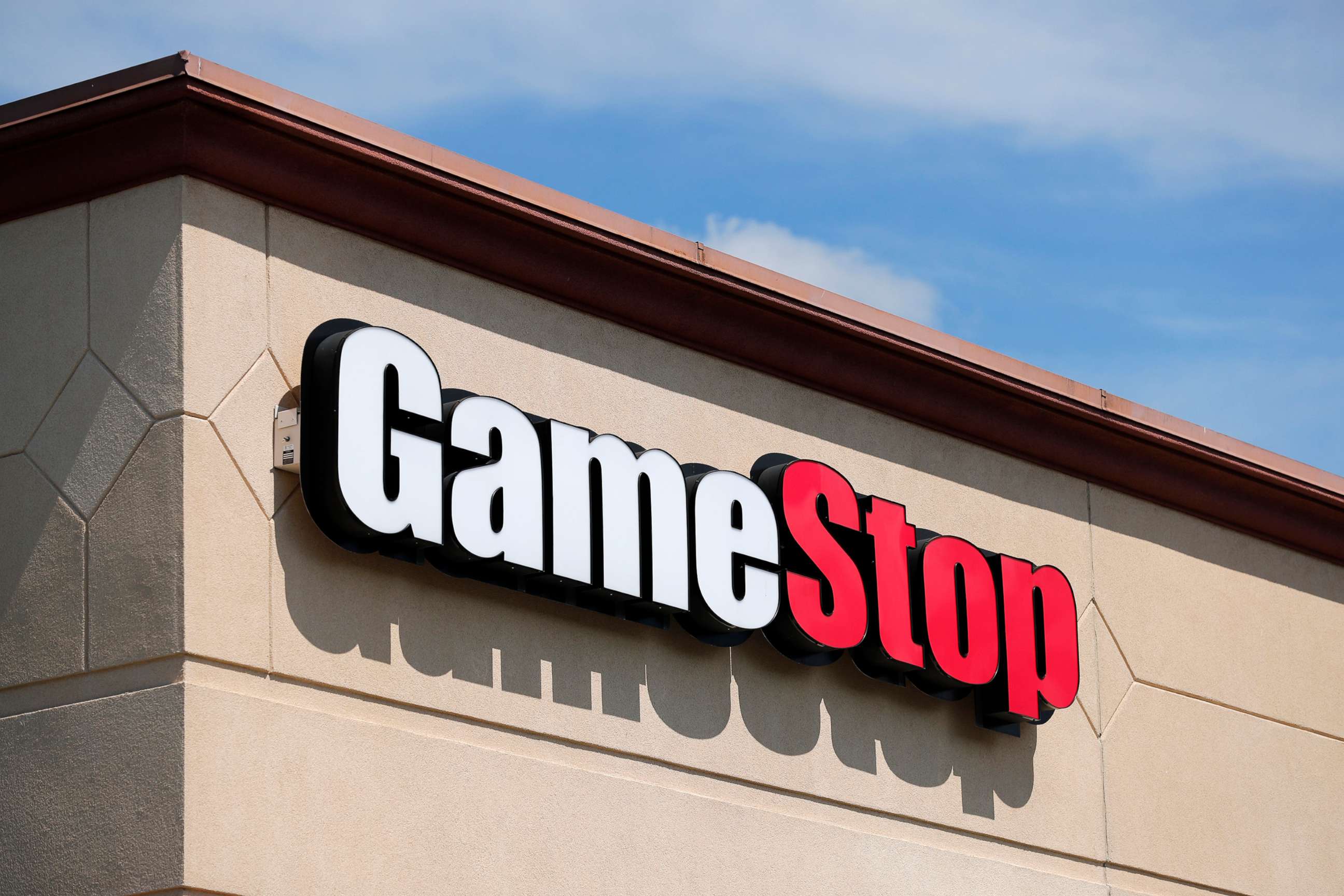
GameStop: Powering Up or Playing Over?
GameStop, the world's largest video game retailer, has been a fixture in the gaming industry for decades. But with the rise of digital downloads and online marketplaces, the company has faced an uphill battle in recent years. So, is GameStop on the path to powering up or is it heading for a game over?
A Legacy of Brick-and- Mortar:
GameStop built its empire on brick-and-mortar stores, offering gamers a place to browse physical games, consoles, and accessories. They fostered a sense of community, with knowledgeable staff and pre-order hype cycles. However, the digital age has brought new challenges.
The Digital Disruption:
The convenience of online game downloads and subscription services has chipped away at GameStop's core business. Why trek to a store when you can buy a game instantly from the comfort of your couch? This shift in consumer behavior has forced GameStop to adapt.
Beyond the Console:
GameStop is trying to diversify its offerings. They've expanded their selection to include collectibles, apparel, and even merchandise for other entertainment franchises. They're also investing in their e-commerce presence to compete with online retailers.
The Meme-Stock Frenzy:
In early 2021, GameStop stock became a target for retail investors on online forums like Reddit. This "meme-stock" frenzy caused a short squeeze, sending the stock price soaring and leaving Wall Street bewildered. While the stock price has since stabilized, the episode highlighted the potential for online communities to disrupt traditional markets.
The Future of GameStop:
The future of GameStop remains uncertain. They need to navigate a challenging landscape, but there are potential opportunities:
The Retro Game Resurgence: The nostalgia factor is strong. GameStop could capitalize on the growing interest in retro games and consoles.
The Esports Arena: Esports is a booming industry. GameStop could explore hosting esports tournaments or creating dedicated gaming spaces within their stores.
Building a Community Hub: Even in the digital age, physical stores can offer a sense of community. GameStop could leverage their locations to host gaming events, workshops, and tournaments, fostering a loyal customer base.
Only time will tell if GameStop can adapt and thrive in the ever-evolving gaming landscape. But one thing's for sure: the company's future will be closely watched by gamers and investors alike.

Teen Hustle: Side Businesses for Budding Young Entrepreneurs
The urge to be independent and earn your own cash is strong! Luckily, there are plenty of business ideas that teens can pursue to start their side hustle journey. Here are some ideas that capitalize on your skills, interests, and the resources available to you:

Creative Corner:
Arts and Crafts: Do you have a knack for painting, jewelry making, or other crafts? Sell your creations online through platforms like Etsy or at local craft fairs.
Social Media Savvy: Offer social media management services to local businesses. Help them create engaging content and manage their online presence (get permission from a parent or guardian before engaging in any business contracts).
Music Lessons: Are you musically inclined? Teach music lessons to younger children on instruments you know well.
Graphic Design: If you have an eye for design, create logos, flyers, or social media graphics for local businesses or individuals.
Tech Whiz?
Website Building: Learn the basics of web design and offer to build simple websites for local businesses or individuals.
App Development: If you're a coding whiz, consider developing a mobile app that solves a problem or caters to a specific niche.
Tech Tutoring: Are you tech-savvy? Offer tutoring or workshops to help older generations navigate technology.

Service Superstar:
Pet Sitting/Dog Walking: Animal lovers can offer pet sitting or dog walking services in their neighborhood.
Tutoring: If you excel in a particular subject, offer tutoring services to younger students.
House Sitting/Yard Work: Provide house sitting or yard work services to neighbors going on vacation.
Errand Running: Busy families might appreciate help with errands like grocery shopping or picking up dry cleaning.
Remember:
Legalities: Check with your parents or guardians about any local regulations or permits required for your chosen business venture.
Start Small: Begin with a manageable workload and gradually expand as you gain experience and clientele.
Customer Focus: Provide excellent customer service to build a positive reputation and attract repeat business.
Safety First: Always prioritize safety, especially when dealing with clients or working outdoors.
Financial Responsibility: Track your income and expenses to manage your earnings effectively.
Bonus Tip: Leverage online platforms and social media to market your services and reach potential clients!
With a little creativity, effort, and the support of your parents or guardians, you can turn your side hustle into a successful teen business venture. So, get out there and start hustling!

Uber Eats Gobbles Up Foodpanda's Taiwan Business in $950 Million Deal
The Taiwanese food delivery market is about to get a whole lot simpler!Uber Technologies announced it will acquire Delivery Hero's Foodpanda business in Taiwan for a cool $950 million in cash. This move consolidates a significant portion of the market under Uber Eats' umbrella.
Why is Foodpanda Leaving Taiwan?
Shifting Focus: Delivery Hero, Foodpanda's parent company, is choosing to focus its resources on other markets where it sees a bigger potential impact.
Farewell, Taiwan: This acquisition signifies Foodpanda's exit from the Taiwanese food delivery scene.
The Numbers Game:
Foodpanda's Dominance: According to Measurable AI data, Foodpanda currently holds a commanding 52% market share in Taiwan by order volume.
Uber Eats in Pursuit: Uber Eats wasn't far behind with a 48% market share.
What This Means for Taiwan:
Uber Eats Takes the Lead: With the acquisition, Uber Eats is poised to become the dominant player in the Taiwanese food delivery market.
Impact on Consumers and Restaurants: It remains to be seen how this consolidation will affect delivery fees, restaurant selection, and overall user experience.
The Future of Food Delivery in Taiwan:
Potential for Price Wars? Will Uber Eats maintain separate platforms or merge them, potentially leading to price wars and changes in service offerings?
Focus on Innovation? Perhaps this will push Uber Eats to innovate and offer new features to further entice Taiwanese consumers.
This acquisition is a major shake-up for the Taiwanese food delivery landscape. It will be interesting to see how Uber Eats handles its newfound dominance and how it shapes the future of the industry in Taiwan.

The Evolving Business Landscape: Challenges and Opportunities
The current business environment is a complex mix of factors creating both challenges and opportunities. Here's a look at the bigger context:
Global Economic Climate:
Market Optimism: Central banks might be cutting interest rates, stimulating borrowing and investment. This could be good news for businesses looking to expand or modernize.
Inflation Concerns: However, rising inflation is eroding consumer confidence, potentially leading to decreased spending and a drag on economic growth. Businesses need to be mindful of cost increases and price sensitivity.
Geopolitical Tensions: Ongoing geopolitical tensions, such as the war in Ukraine, can disrupt supply chains and create market volatility. Businesses need to have contingency plans to mitigate these risks.
Industry-Specific Trends:
Technology: Technological advancements like AI and automation are transforming many industries. Businesses need to embrace these changes to stay competitive.
Sustainability: Consumers are increasingly demanding sustainable practices from businesses. Implementing eco-friendly measures can improve brand reputation and attract environmentally conscious customers.
Remote Work: The pandemic has normalized remote work arrangements. Businesses need to adapt their operations to accommodate a more dispersed workforce.
Shifting Consumer Behavior:
Value-Driven Decisions: Inflationary pressures are making consumers more budget-conscious. Businesses need to offer good value for money and prioritize customer satisfaction.
Evolving Preferences: Consumer preferences are constantly changing. Businesses need to stay informed about these trends and adapt their products and services accordingly.
Navigating the New Landscape:
In this dynamic environment, businesses need to be flexible and adaptable. Here are some key strategies:
Data-Driven Decisions: Utilize data analytics to understand market trends, customer behavior, and operational efficiency.
Embrace Innovation: Continuously innovate and adapt to evolving technologies and consumer demands.
Focus on Agility: Be prepared to shift gears quickly as economic and market conditions change.
Build Resilience: Develop strategies to mitigate risks associated with supply chain disruptions and geopolitical tensions.
Conclusion:
The current business landscape presents both challenges and opportunities. By staying informed, adapting to new trends, and prioritizing innovation, businesses can thrive in this dynamic environment.

Beyond the Buzzword: Demystifying the "Freemium" Business Model
The freemium model has taken the business world by storm, offering a basic service for free with premium features locked behind a paywall. From Spotify's music streaming to Dropbox's cloud storage, it's a strategy that seems ubiquitous. But beneath the surface lies a complex web of user psychology, strategic implementation, and potential pitfalls.
This post dives deep into the freemium model, unpacking its core aspects:
The User Acquisition Powerhouse: Freemium's magic lies in attracting a vast user base with a no-cost entry point. We'll explore how this initial free tier hooks users and fosters brand loyalty.
The Value Balancing Act: Crafting a compelling free tier that provides enough utility while not overshadowing the premium features is crucial. We'll analyze successful examples and strategies for achieving this balance.
Monetization Magic or Freebie Fatigue? Converting free users into paying customers is the ultimate goal. We'll explore effective strategies for upselling premium features while avoiding user frustration and "freebie fatigue."
But freemium isn't a silver bullet. We'll also delve into the challenges businesses face:
The Engagement Enigma: Keeping free users engaged without offering too much value is a constant battle. We'll discuss strategies for fostering user engagement without compromising the premium experience.
The Data Dilemma: Freemium models generate a wealth of user data. We'll explore how businesses can leverage this data responsibly while maintaining user privacy.
Is freemium the key to unlocking sustainable growth, or will businesses fall victim to a race to the bottom fueled by freebie expectations? This post equips you with the knowledge to navigate the freemium landscape, whether you're a business considering this model or a consumer trying to make informed choices.
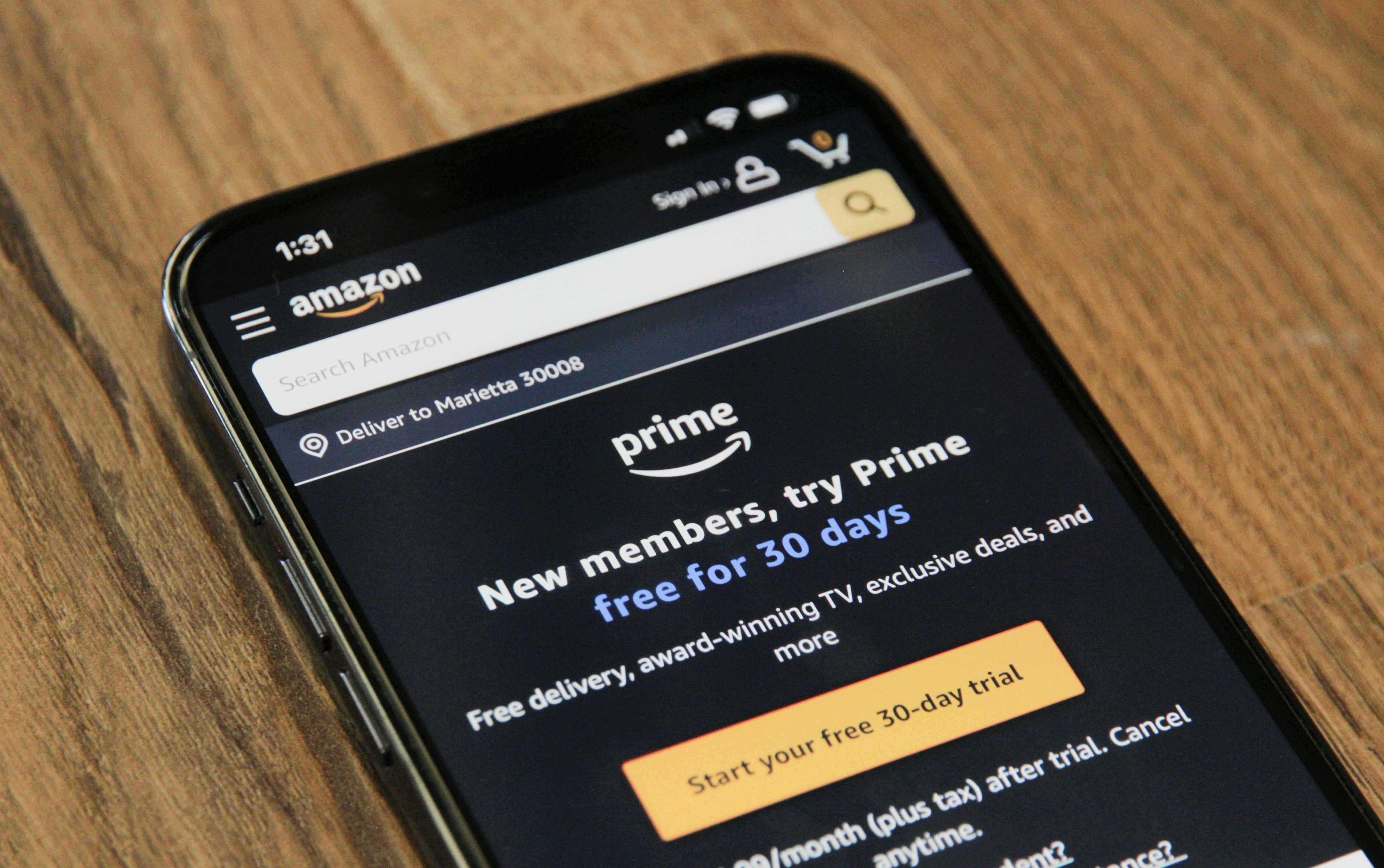
Subscription Services: Conquering Convenience or Creating Chaos? Unveiling the Subscription Revolution's Impact on Businesses and Consumers
The business landscape is experiencing a tidal wave of subscriptions. From daily meal deliveries to monthly software updates, companies are offering access to products and services in exchange for recurring fees. But is this subscription revolution a win-win for both businesses and consumers, or is there a hidden downside?
This post dives deep into the world of subscriptions, exploring:
Benefits for Businesses: Predictable revenue streams, stronger customer relationships, opportunities for upselling and cross-selling.
Benefits for Consumers: Convenience, access to exclusive products, potential cost savings.
Potential Drawbacks: Subscription fatigue, feeling locked-in, difficulty cancelling, managing multiple subscriptions.
We'll also explore how savvy consumers can navigate the subscription landscape to maximize convenience and value, while businesses can use subscriptions to build lasting customer loyalty. Is the subscription model the future, or is there a need for a reset?

From Soda Pop to Space Travel: The Unfizzable Rise of SpaceX
The dream of private space exploration often conjures images of eccentric billionaires and fantastical rockets. However, the story of SpaceX, the pioneering company leading the charge in space travel, has its roots not in a luxurious office, but in a rather unassuming location – a rented warehouse in Los Angeles. Founded by Elon Musk, a visionary entrepreneur with a penchant for audacious goals, SpaceX aimed to revolutionize space travel by making it cheaper and more accessible.
A Rocket on a Shoestring Budget (2002):
Driven by a passion for space exploration and a belief in humanity's multi-planetary future, Musk invested a hefty chunk of his fortune from his previous ventures, PayPal and X.com. The early days at SpaceX were a whirlwind of hustle and ingenuity. The team, a passionate group of engineers and dreamers, faced the daunting task of developing rockets from scratch, all on a shoestring budget.
Learning from Failure: The Grasshopper Years (2006-2013):
The path to success was paved with failures. SpaceX's first three attempts at launching their Falcon 1 rocket all ended in fiery explosions. Undeterred, Musk and his team adopted a philosophy of "failing fast and learning faster." They meticulously analyzed each mishap, using the data to refine their designs and processes. Finally, in 2008, the Falcon 1 achieved orbit, marking a pivotal moment for the company.
Breaking the Mold: Reusability and Affordability (2010s-present):
SpaceX didn't just aim to reach space; they aimed to do it differently. One of their core focuses was reusability. While traditional rockets were disposable, SpaceX designed the Falcon 9 to return to Earth and land upright – a feat previously thought impossible. This innovation significantly reduced launch costs, making space travel more accessible for government agencies and private companies alike.
Starship: Aiming for the Stars (present):
Today, SpaceX is a leader in the private space industry. They have a fleet of operational rockets, are contracted by NASA for cargo and crew missions to the International Space Station, and are developing the Starship – a fully reusable launch system designed for deep space exploration, including missions to Mars.
SpaceX's story is an inspiration for anyone with a audacious dream. It demonstrates the power of perseverance, innovation, and a relentless pursuit of a seemingly impossible goal. Who knows, maybe their rockets will one day take us not just beyond our atmosphere, but to a future where humanity has a foothold amongst the stars.

From Bedrooms to Billions: The meteoric rise of Airbnb
Forget fancy offices and corporate ladders. The story of Airbnb, the hospitality giant, began not in a gleaming skyscraper, but in a far more humble setting – two air mattresses on the floor of a San Francisco apartment. This is the tale of Brian Chesky and Joe Gebbia, two young entrepreneurs who dared to challenge the traditional hospitality industry and, in the process, created a global phenomenon.
Air Bed and Breakfast (2007):
Struggling to pay rent, Chesky and Gebbia hatched a wild idea – rent out air mattress space in their apartment to attendees of a crowded design conference. This unconventional solution not only addressed their financial woes, but also sparked the seed of a revolutionary concept – a peer-to-peer platform for people to list and rent out their spare space. Thus, Airbnb, a portmanteau of "air mattress" and "bed and breakfast," was born.
From Niche to Network (2008-2010):
The initial response was modest, but the idea resonated with budget-conscious travelers seeking unique experiences. Chesky and Gebbia, fueled by a shoestring budget and sheer determination, built a user-friendly website that connected travelers with potential hosts. They focused on building trust within the platform, implementing verification systems and secure payment options. Slowly but surely, Airbnb began to chip away at the dominance of traditional hotels.
A Sharing Economy Powerhouse (2010s-present):
Airbnb's growth trajectory became exponential. With the rise of smartphones and the sharing economy, the platform exploded in popularity. People across the globe saw Airbnb as a way to monetize their spare space, while travelers embraced the chance to experience a city like a local.
Beyond Beds: Building Experiences (present):
Today, Airbnb offers a diverse range of accommodations, from cozy apartments to luxurious villas. They've expanded their offerings to include experiences – cooking classes, guided tours, and even local adventures. Despite facing regulatory hurdles in some cities, Airbnb continues to innovate, forging partnerships with travel agencies and offering unique experiences like castle stays and private island getaways.
From a makeshift solution to a hospitality powerhouse, Airbnb's story is a testament to the power of disruptive ideas and the potential that can bloom in the most unexpected places.
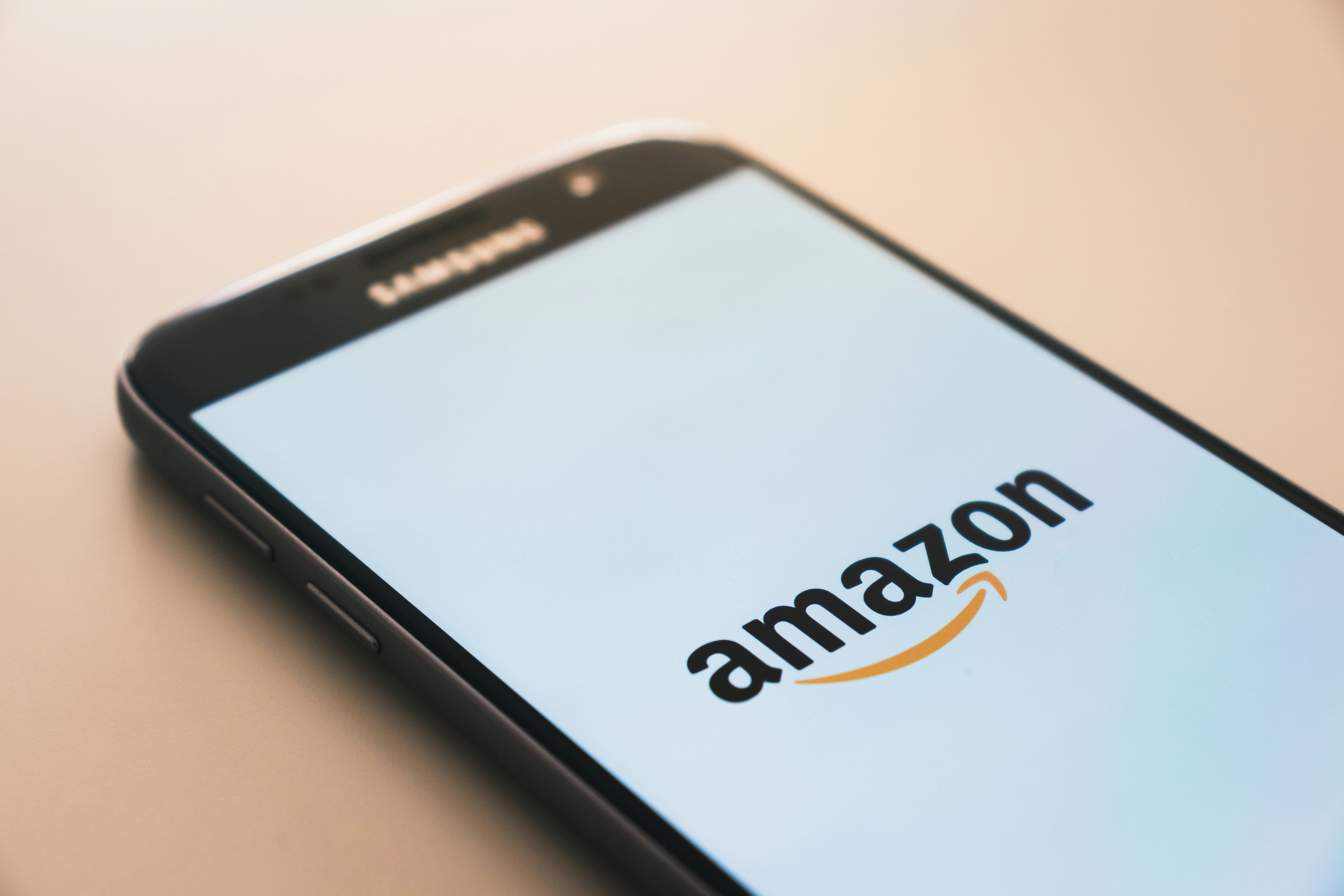
From Humble Bookstore to Billion-Dollar Empire: The Retail Reinvention of Jeff Bezos and Amazon
Seattle, 1994. Jeff Bezos, a former Wall Street whiz kid, was brimming with an audacious dream – to open an online bookstore that could "hold the world's largest selection of books." Nestled in his garage, amidst cardboard boxes and packing peanuts, Amazon was born. Little did anyone know, this unassuming startup would become a retail behemoth, forever altering the way we shop.
Beyond the Bookshelves (1994-1997):
Amazon's initial success wasn't just about convenience. Bezos, a tech enthusiast, understood the power of the internet. He invested heavily in building a user-friendly website with personalized recommendations and efficient search algorithms. This, coupled with a relentless focus on customer service and competitive pricing, attracted a loyal following of bibliophiles.
From Niche to Colossus (1997-2000s):
Amazon wasn't content with just dominating the book market. Bezos recognized the internet's potential to become a one-stop shop for everything under the sun. Leveraging their established infrastructure and customer base, they began expanding their online offerings – CDs, electronics, toys, and more. This diversification strategy fueled explosive growth, pushing them beyond the confines of a simple bookstore.
The Disruption Machine (2000s-present):
Amazon's relentless innovation extended beyond product selection. They pioneered e-reader technology with the Kindle, disrupted the grocery market with Amazon Fresh, and revolutionized cloud computing with Amazon Web Services (AWS). This willingness to explore new frontiers cemented their position as a retail and technological titan.
A Retail Revolution with a Click:
Today, Amazon casts a long shadow over the retail landscape. From independent bookstores to brick-and-mortar giants, many have felt the sting of their disruption. Amazon, however, continues to evolve, venturing into areas like healthcare and logistics.
Love it or hate it, there's no denying that Amazon, born from a dream in a Seattle garage, fundamentally reshaped the way we shop and interact with the digital world.

The Big Bite Out of Business: How a Garage Startup Revolutionized Fast Food
In the heart of 1940s California, amidst the booming post-war burger joints, a revolutionary idea was about to take root – not in a fancy boardroom, but in a converted San Bernardino carhop service. This is the story of how two brothers, Maurice ("Mac") and Richard McDonald, dared to challenge the fast-food landscape and, in the process, created a global empire: McDonald's.
From Speedy to Speeder (1940s):
The McDonald brothers weren't strangers to the food industry. They had already operated a successful drive-in restaurant. However, long wait times and a cumbersome menu were becoming major roadblocks to growth. Mac, a man obsessed with efficiency, embarked on a mission to streamline the entire fast-food experience.
The Million Dollar Shake (1940s):
They tore down the unnecessary bells and whistles, focusing on a limited menu of high-volume items like hamburgers, cheeseburgers, french fries, and milkshakes. They revolutionized the kitchen layout for speed and implemented self-service at counters. This transformation turned their restaurant into a "Speedee Service System," doubling their revenue in just one year.
The Franchise Formula (1950s):
The McDonald brothers realized the true potential of their creation wasn't just in running a single restaurant, but in replicating their successful model. They partnered with Ray Kroc, a charismatic salesman who saw the gold mine beneath the golden arches. Together, they perfected the franchise model, establishing strict quality control standards and operational procedures to ensure consistent customer experiences across locations.
The Rise of the Golden Arches (1960s-present):
McDonald's became a cultural phenomenon, spreading like wildfire across the United States and eventually across the globe. They adapted to changing consumer preferences, introducing new menu items and embracing technology for ordering and delivery.
A Bite-Sized Legacy:
Today, McDonald's is a global behemoth, with thousands of restaurants in every corner of the world. Despite facing criticism for its impact on health and the environment, the company continues to innovate, experimenting with plant-based options and self-service kiosks. Love it or hate it, there's no denying that McDonald's, born from a desire for speed and efficiency in a California garage, revolutionized the way we eat and fundamentally changed the landscape of fast food forever.

From Apples to Apple: The Story of Macintosh
The story of Macintosh, or Mac as it's affectionately known, isn't just about a computer. It's a tale of innovation, rebellion, and a relentless pursuit of user-friendliness. Here's how a crazy idea in a California garage blossomed into a computer that revolutionized the personal computing landscape.
The Seed of an Idea (1979):
Jef Raskin, a visionary employee at Apple, dreamt of a computer for the "everyman." He envisioned a machine that was affordable, easy to use, and as intuitive as a home appliance. He called it the Macintosh, after his favorite apple variety, the McIntosh.
A Different Path (1981):
Steve Jobs, a co-founder of Apple with a flair for design and a keen eye for market trends, became involved in the Macintosh project. He saw the potential for a computer that transcended the clunky, text-based machines of the time. He envisioned a graphical user interface (GUI) with icons, windows, and a mouse – a radical departure from the keyboard-driven norm. Jobs's vision clashed with Raskin's, leading to Raskin's departure, but the core concept of a user-friendly computer remained.
Birth of a Legend (1984):
On January 24th, 1984, during a now-iconic Super Bowl commercial, the Macintosh was unveiled to the world. The ad, featuring a young woman defying a dystopian world dominated by conformity, perfectly captured the rebellious spirit of the Mac and its promise to empower individuals.
Innovation and Challenges (1984-1990s):
The Mac's innovative features, like the mouse and the graphical interface, made it a breath of fresh air. However, its high price tag and limited software library initially hampered its widespread adoption. Despite the early challenges, Apple persisted in refining the Mac, adding features like desktop publishing and multimedia capabilities.
A New Chapter (1997):
Apple's fortunes took a dramatic turn with the return of Steve Jobs in 1997. He spearheaded the development of the iMac, a sleek, all-in-one computer that brought the Mac's user-friendliness and design aesthetics to a wider audience. This marked the beginning of a new era for the Mac, one characterized by continuous innovation with products like the MacBook, the iPod, and the iPhone, all seamlessly integrating with the Mac ecosystem.
The Legacy of the Mac:
Today, the Mac holds a special place in the world of computing. It's a favorite among creatives, educators, and professionals who value its intuitive design, powerful features, and seamless integration with other Apple products. The story of the Mac is a testament to the power of daring ideas, unwavering user focus, and the ability to adapt to a constantly evolving technological landscape.

From Humble Garage to Household Name: The Story of Hewlett-Packard
In the idyllic Santa Clara Valley of California, amidst the burgeoning technology scene of the 1930s, a friendship blossomed that would change the world. Bill Hewlett, an electrical engineer at Stanford University, and David Packard, a recent graduate with a business degree, shared a passion for tinkering and innovation. Their collaborative spirit found a home in a rented garage, and in 1939, the Hewlett-Packard Company (HP) was born.
Their first product? An audio oscillator, a rather unassuming device used to test sound equipment. However, their focus on quality and precision engineering set them apart. The HP 200A oscillator quickly gained recognition for its accuracy and reliability, attracting a loyal following among engineers and audiophiles.
Fueled by their initial success, HP expanded its offerings throughout the 1940s. They developed a variety of electronic test equipment, catering to the growing needs of the military and scientific research institutions. Their commitment to innovation became a hallmark of the company, with HP engineers constantly pushing the boundaries of technology.
The post-war era ushered in a period of rapid growth for HP. The invention of the transistor in 1947 opened a new chapter in electronics miniaturization, and HP was at the forefront of this revolution. They developed a series of innovative transistorized instruments, solidifying their position as a leader in the test and measurement field.
The 1960s saw HP enter the world of computing. Their HP 2116 minicomputer, launched in 1966, was a game-changer. It was a smaller, more affordable alternative to the bulky mainframe computers of the time, making computing accessible to a wider range of businesses and institutions. HP continued to innovate in the computing space, eventually becoming a major player in the personal computer revolution of the 1970s and 80s.
Today, Hewlett-Packard is a global technology giant, offering a vast array of products and services ranging from personal computers and printers to enterprise software and healthcare solutions. Despite its immense size, HP retains a dedication to innovation and customer satisfaction, a legacy inherited from the tinkering days in the garage. The story of HP is a testament to the power of collaboration, a relentless pursuit of excellence, and the ability to adapt and evolve in a rapidly changing technological landscape.
